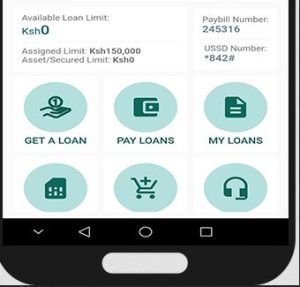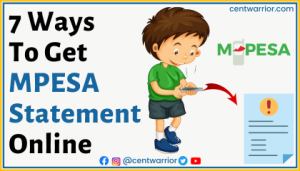Are you struggling with debt and can’t find a way to get out of it? Do you wonder if there’s a foolproof way to pay off your debt fast and stay out of it? You should try the Snowball Method to pay off debt, as it’s practical and result-yielding.
In the Debt Snowball, you start paying your non-mortgage debt from the lowest balance to the biggest. Each time you clear a small debt, it motivates you to clear the next one, and before you know it, you are debt-free.
Of course, you have to do a few things in between to ensure you are consistent and driven to pay your debt, and I’ll explain them to you. The bottom line, however, is that it’s possible to pay debt fast and become debt-free as soon as possible.
Overall, we’ll examine the Debt Snowball Method, its advantages, why it works, and how you can calculate your debt payment using it, among other essential details. We’ll also compare the Snowball Method with the Debt Avalanche Method, as the two are often confused despite being pretty different.
Let’s dive in:

What’s The Debt Snowball Method?
Debt Snowball is the debt reduction strategy that helps you quickly pay your non-mortgage debt from the smallest balance to the largest. That means every other debt that’s not a mortgage, including student loans, personal loans, auto loans, and medical bills.
In Debt Snowball, you arrange your non-mortgage debt from the smallest to the biggest in terms of balance without looking at their interest rates. That’ll allow you to start tackling them in ascending order.
Who Created the Debt Snowball Method?
While it’s unclear who created the Debt Snowball Method, financial expert and TV host Dave Ramsey has popularized the debt-reduction strategy. Ramsey shares the Debt Snowball as one of his 7 Baby Steps to Financial Freedom. It’s the second step after setting up the starter emergency fund:
Here’s a highlight of the 7 Baby Steps by Dave Ramsey:
Step 1 – Set up a starter emergency fund (equivalent to $1,000) to cater to financial emergencies
Step 2 – Start paying non-mortgage debt using Debt Snowball. Mortgage will have to wait till step 6.
Step 3 – Fully fund your emergency fund (It should equal 3-6 months of your household’s living expenses)
Step 4 – Allocate 15% of your household income to retirement. Then move to 5.
Step 5 – Set up a college fund
Step 6 – Start making home payments. That’s your mortgage.
Step 7 – Build wealth and remember to give to charity
How to Pay Off Debt Quickly Using Debt Snowball Method
Below are the basic Debt Snowball Steps:
Step 1 – List Your Non-Mortgage Debt
List all your debt apart from the mortgage. That includes the following:
- Student loans
- Car loans
- Unpaid medical bills
- Personal loans
- Credit card loans
- Mobile loans
Remember to list your non-mortgage loans in ascending order – from the one with the smallest balance to the one with the most.

Step 2 – Make Minimum Payments
Make minimum payments for all your debts except the one with the least balance.
Step 3 – Attack the Smallest Debt
Now, attack the smallest debt with a vengeance to clear it. To do that, you should free up some money or find ways to make more.
Concerning freeing up money, you can try these savings ideas:
- Budget for your money and follow it
- Cook at home – eat out less often
- Shop with a grocery list
- Shop for items on sale
- Buy in bulk when necessary
- Switch to energy-saving lights and appliances
- Cancel unnecessary subscriptions
- Take advantage of free and low-cost entertainment
And when it comes to making extra income on the side, consider these options:
- Sell something you don’t use or need
- Work over time
- Ask for a raise if it’s possible
- Start a side hustle
- Start a business
- Become an online freelancer
- Switch jobs
Step 4 – Attack the Next Smallest Debt
Assuming you’ve some money left after clearing the smallest debt, you can now attack the next smallest debt with all you have. But before you do, ensure you make minimum payments on all the other debt before allocating all your effort to attacking the next smallest debt.
Step 5 – Repeat the Above Steps
Once you completely clear a particular small debt, go to the next and attack it after making minimum payments on the rest. Repeat the steps until you are ultimately debt-free.
How to Calculate Debt Snowball?
Consider using the Debt Snowball calculator on the Ramsey Solutions website. You need to indicate your non-mortgage debt, interest, minimum payment, and balance, and the online calculator will calculate everything for you. The online calculator will help you know when to expect to be debt-free.
Let’s now look at an example of the manual way of doing it:
Debt Snowball Method Example
Let’s take an example of someone with the following non-mortgage debts:
| Debt | Debt Amount | Minimum Monthly Payment |
| Personal loan | $500 | $50 |
| Medical bills | $1,000 | $100 |
| Credit card debt | $2,000 | $150 |
| Auto loan | $5,000 | $200 |
| Student loan | $8,000 | $250 |
| Total | $16,500 | $750 |

How to Go About It:
- Start by paying the minimum payments for all debts apart from the personal loan. In this case, the total minimum payment for medical bills, credit card debt, auto loans, and student loans will be $700.
- Assuming you are left with $1,000 after making the minimum payments, use it to attack the personal loans. That means you’ll pay $500 for the debt and remain with $500, which you can forward to the next month.
- During the second month, make the minimum payment on the other remaining debts apart from medical bills. Assuming you make $1,000 from side hustles, you’ll have $1,500 (if you add the $500 saved up from the previous month) to pay your debt.
- Now, make the minimum payments for all other debts apart from the next smallest loan (medical bills). That’ll cost you about $600. So you’ll remain with $900, which you can use to pay the medical bills.
- Attack the medical bills with the $900 you have. Since the total debt is $1,100, if you include the minimum payment, you’ll have a debt balance of $200, which you can attack on the 3rd month.
- Assuming you can raise $1,000 in the third month, use it to pay the minimum payments for all the other bills except the medical bills. Again, that’ll cost you $600.
- Then, pay your $200 debt balance for medical bills and put the remaining $200 on hold until the fourth month.
- Continue with the above steps until you pay the last debt and are debt-free
But What Is an Advantage to Using the Debt Snowball Method?
Dave Ramsey states, “Personal finance is 80% behavior and 20% head knowledge.” For this reason, the Debt Snowball Method works. It’s all about behavior changes, and once you can change a few things to free up some money and channel it towards paying your debt, you can get out of debt quickly.
The small wins you get from clearing small debts are psychological boosts to help you target the next small debt. The more you do it, the more confident you become in paying off even the most enormous debt.
Every pay-off of a small debt allows you to do the Happy dance. When you knock off a debt, you tell yourself, “I just did it! I can do it again! Bring it on!”
Unlike the Debt Avalanche, which I’ll talk about later, the wins in Debt Snowball don’t take long, and that’s what keeps you going.
Furthermore, since you aim to free as much money as possible and channel it towards paying your debt, Debt Snowball enables you to adopt a saving culture. It becomes easy to continue saving even after clearing your debt.
Depending on the debt size and clearing speed, it may take between 6 and 24 months to pay off all your non-mortgage debt using the Debt Snowball Method.
How About the Disadvantages of Debt Snowball?
As good as Debt Snowball is, there’s always the possibility of paying a higher interest in the long run, as the debt reduction strategy focuses on the minimum balance, not the interest rate.
The strategy may result in you pushing a debt with higher interest last if it has the most considerable minimum balance, which might mean paying more. That’s probably one reason some people opt for Debt Avalanche, even though it also has its concerns, as we’ll see later.

Who Is the Debt Snowball Method Best for?
Generally, Debt Snowball is best for:
- People with multiple non-mortgage loans
- Loans that require you to pay at least minimum monthly payments
- When you can afford to make minimum payments regularly
- You can find ways to earn more money and free up some
Debt Snowball Method Vs Debt Avalanche Method
Debt Snowball technique and Debt Avalanche are the most popular debt payment strategies. They are, however, different. Here’s how the two differ:
a. Debt payment strategy
In Debt Snowball, you arrange and attack your debt from the one with the least minimum balance to the one with the largest. In contrast, you arrange and attack your debt from the one with the highest interest to the one with the smallest in the Debt Avalanche.
b. Payment motivation
Each time you clear a smaller debt using Debt Snowball, you are motivated to attack the next smallest debt. The more small-balance debts you clear, the more motivated you are to clear even the most enormous debts.
Sadly, that’s not the case with Debt Avalanche. It may take a while to clear a particular debt since you attack them from the one with the highest rate, often the one with the most considerable balance.
c. Saving On Interest
This is probably the only advantage that Debt Avalanche has on Debt Snowball. Once you attack the debt with the highest interest using Debt Avalanche, you save yourself from paying a higher interest the next time. Sadly, for Debt Snowball, you may leave the debt with the highest interest as the last one to clear if it has the most considerable balance.
Concluding Thought:
As we’ve shared, the Debt Snowball Method is an effective way to pay your non-mortgage debt and get out of it quickly. You can thus try it and observe the tips shared to help you free as much money as possible and make some on the side, which you can use to reduce your debt burden quickly.
Meanwhile, you can check out this fantastic book, Winning the Game of Debt. I share excellent strategies, including Debt Snowball, that I used to get out of debt and build a financial future.
Also Read:







